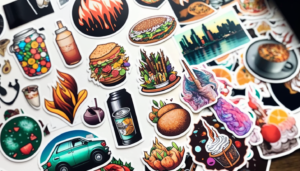Color theory is the science and art behind understanding the various properties of colors and their interactions. The use of colors plays an important role in various fields, including arts, crafts, design, marketing, and psychology. Understanding color theory is crucial for artists, designers, and crafts enthusiasts, as it helps them create aesthetically pleasing and visually appealing pieces of art.
In this article, we will provide a comprehensive guide to understanding color theory in arts and crafts. We will discuss the principles of color theory, the color wheel, color schemes, and applications of color theory in various arts and crafts projects.
The Principles of Color Theory
The principles of color theory are based on the three elements of color: hue, value, and intensity. Hue refers to the pure color, such as red, blue, or yellow. Value refers to the lightness or darkness of a color, while intensity refers to the brightness or dullness of a color.
Another important principle of color theory is color harmony, which is the visual balance of colors. Color harmony can be achieved through the use of color schemes, which are a combination of colors that are aesthetically pleasing and visually balanced. There are several color schemes, including monochromatic, complementary, analogous, and triadic color schemes.
Read More: THE IMPORTANCE OF COLOR THEORY IN GRAPHIC DESIGN: HOW TO CREATE EFFECTIVE DESIGNS
The Color Wheel
The color wheel is a visual representation of the relationships between colors. It is based on the primary colors of red, blue, and yellow, which cannot be created by mixing other colors. Secondary colors are created by mixing two primary colors, while tertiary colors are created by mixing a primary color with a secondary color. The color wheel can be divided into warm and cool colors. Warm colors, such as red, orange, and yellow, create a sense of energy and warmth, while cool colors, such as blue, green, and purple, create a sense of calmness and serenity.
The color wheel is an important tool for artists, designers, and crafts enthusiasts, as it helps them choose colors that are visually appealing and balanced.
Color Schemes
Color schemes are a combination of colors that are aesthetically pleasing and visually balanced. There are several color schemes that are commonly used in arts and crafts, including:
- Monochromatic color scheme: A monochromatic color scheme uses shades, tints, and tones of a single color. This creates a harmonious and sophisticated look.
- Complementary color scheme: A complementary color scheme uses colors that are opposite each other on the color wheel, such as red and green, blue and orange, or yellow and purple. This creates a bold and vibrant look.
- Analogous color scheme: An analogous color scheme uses colors that are adjacent to each other on the color wheel, such as blue, blue-green, and green. This creates a subtle and harmonious look.
- Triadic color scheme: A triadic color scheme uses three colors that are evenly spaced on the color wheel, such as red, yellow, and blue. This creates a vibrant and balanced look that is bold yet harmonious.
The choice of color scheme depends on the desired effect and mood that the artist or crafter wishes to convey. For example, a monochromatic color scheme can be used to create a calming and serene atmosphere, while a complementary color scheme can be used to create a bold and vibrant look.
Applications of Color Theory in Arts and Crafts
Color theory has numerous applications in various fields, including arts and crafts. Artists, designers, and crafts enthusiasts use color theory to create aesthetically pleasing and visually balanced pieces of art. Some of the applications of color theory in arts and crafts include:
- Painting: In painting, color theory is used to create harmonious color schemes and to mix colors to create new shades, tints, and tones.
- Graphic Design: In graphic design, color theory is used to create visually appealing and effective designs for logos, websites, and other visual elements.
- Fashion Design: In fashion design, color theory is used to create visually balanced and aesthetically pleasing color combinations for clothing and accessories.
- Home Decor: In home decor, color theory is used to create harmonious and visually appealing color schemes for interior design and decoration.
- Jewelry Making: In jewelry making, color theory is used to choose the right color combinations for beads, stones, and other materials used in creating jewelry.
Conclusion
Color theory is an essential part of arts and crafts. It helps artists, designers, and crafts enthusiasts create aesthetically pleasing and visually balanced pieces of art. By understanding the principles of color theory, the color wheel, color schemes, and applications of color theory in various fields, one can enhance their creative skills and create beautiful and meaningful pieces of art.
So whether you are a professional artist or crafter or just someone who loves to create, understanding color theory is a valuable tool that can help you take your art to the next level.

